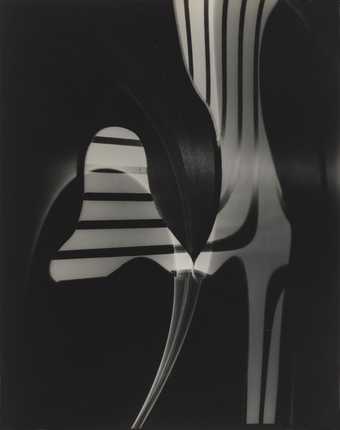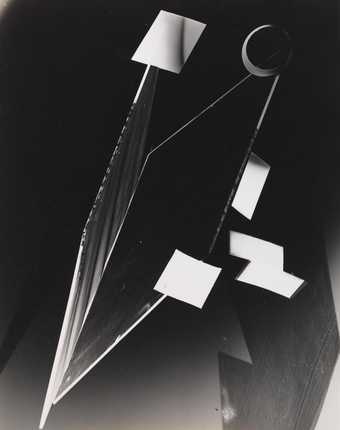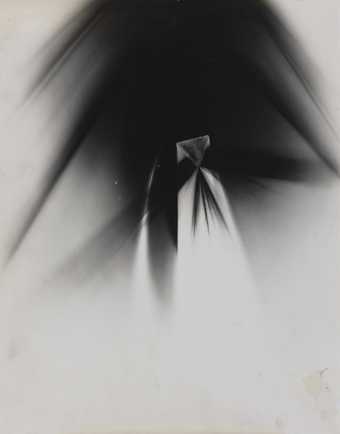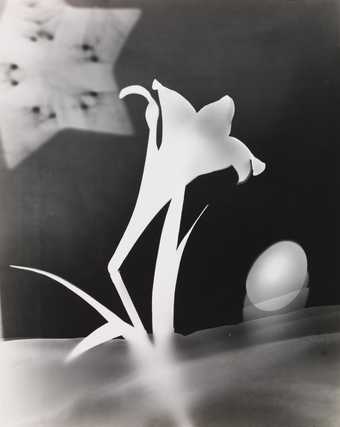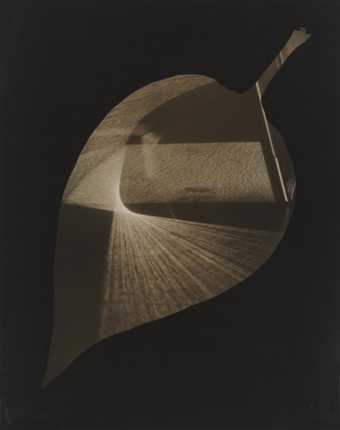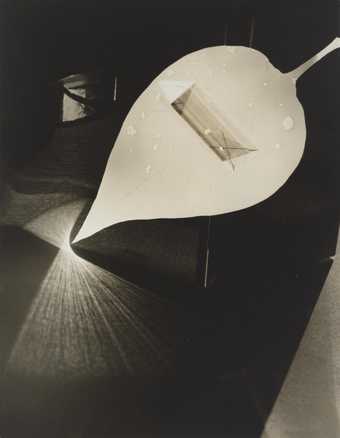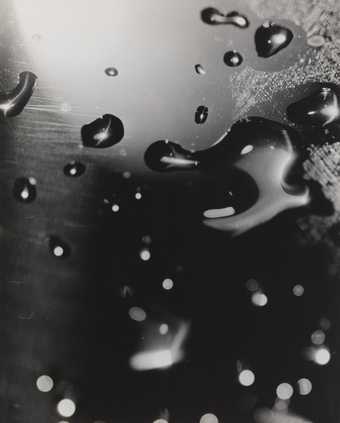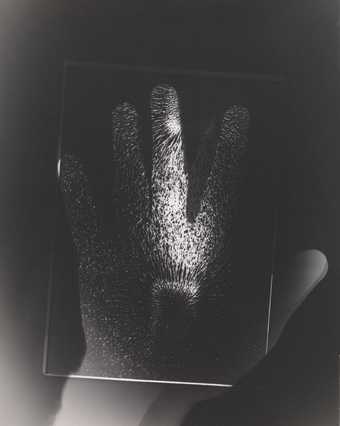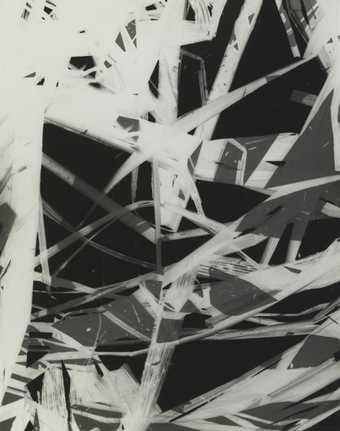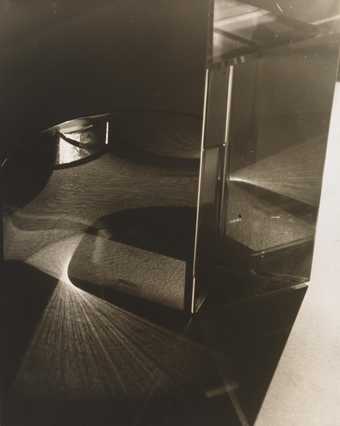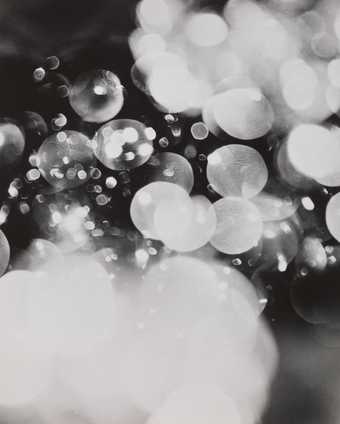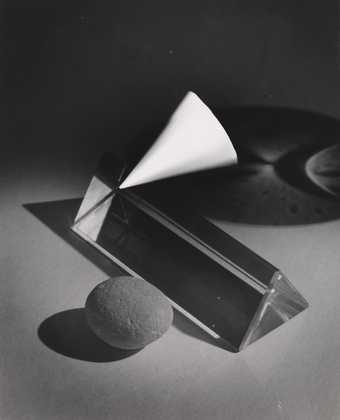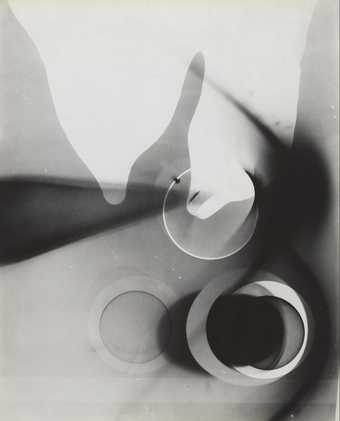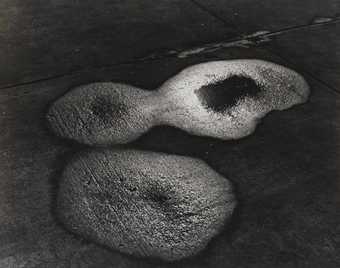
In Tate Liverpool
- Artist
- György Kepes 1906–2001
- Medium
- Photograph, gelatin silver print on paper
- Dimensions
- Image: 239 × 200 mm
- Collection
- Tate
- Acquisition
- Purchased with funds provided by the Russia and Eastern European Acquisitions Committee and the Photography Acquisitions Committee 2013
- Reference
- P80553
Summary
This is one of a large group of photograms and studies in modernist photography in Tate’s collection by the Hungarian-born photographer, painter, designer, teacher and writer, Gyorgy Kepes (see Tate P80532–P80568, T13973–T13975). They date from 1938 to the early 1940s and were made in the United States, where Kepes had emigrated in 1937. Kepes made his earliest photograms in Budapest, taking nature as his starting point, directly recording the process without a camera onto photosensitized surfaces. In the late 1920s Kepes joined the Berlin studio of the Hungarian artist and modernist photographer László Moholy-Nagy (1895–1946). Moholy-Nagy had been a teacher at the Bauhaus School in Germany and was one of the principals in promoting the values of the Bauhaus movement, as well as a pioneer who experimented with a multitude of materials and techniques. Kepes was introduced to the ‘new vision’ provided by the possibilities of modern art techniques while collaborating alongside Moholy-Nagy. He began to experiment with photograms himself – photographic prints made in the darkroom by placing objects directly onto light sensitive paper and exposing the paper to light. Later, he made prints he called ‘photo-drawings’, in which he applied paint to a glass plate that he then used as though it were a negative. Only a few of Kepes’s works from this earlier period survived the artist’s many moves in the 1930s and the Second World War.
Essentially abstract images, the photograms exist metaphorically between science and art: as dematerialised light recordings of natural objects they have close links with Kepes’s later interest in scientific records. In 1937 Kepes emigrated to the United States at the invitation of Moholy-Nagy to run the Color and Light Department at the recently founded New Bauhaus in Chicago, which would become the Institute of Design. The photograms he produced during this time, including the ones in Tate’s collection, demonstrate the fundamental aspects of his artistic personality, such as social consciousness, an interest in the formal qualities of light and the sensuousness of surfaces, and an exploration of an abstraction derived from nature and real objects. The imagery in these works includes studies with geometric forms such as prisms and cones, mechanical forms such as gears, domestic objects including sieves and string, more organic forms such as leaves, rocks, feathers and bone, and typography. Although Kepes did not himself view photography per se as a central concern, it formed a link between his painting, films and technological and environmental art projects. Light, the essence of photography, is at the heart of his practice.
Further reading
Judith Wechsler, Gyorgy Kepes, The MIT Years: 1945–1977, Cambridge, Massachusetts 1978.
Juliet Bingham
August 2013
Does this text contain inaccurate information or language that you feel we should improve or change? We would like to hear from you.
Explore
- emotions, concepts and ideas(16,416)
-
- formal qualities(12,454)
-
- photogram(11)
- photographic(4,673)
- silhouette(388)
- kitchen(636)
- gauze(2)
- compasses(7)
You might like
-
György Kepes Black and White Stripes
c.1939–40 -
György Kepes Gauze and Funnel Photogram
c.1939 -
György Kepes Fins and Rectangles
c.1939–40 -
György Kepes Feathery Light
c.1939–40 -
György Kepes Lily and Egg
c.1939 -
György Kepes Leaf and Prism
1938 -
György Kepes Leaf and Prism
c.1939–40 -
György Kepes Blobs 3
c.1939–40 -
György Kepes Hand and Magnet Photogram
c.1939–40 -
György Kepes Structure Photogram
c.1939–40 -
György Kepes Prism and Wood
c.1939 -
György Kepes Circles and Dots
c.1939–40 -
György Kepes Cone, Prism, Rock
c.1939–40 -
György Kepes Blobs and Circles
c.1939–40 -
György Kepes Light Reflection (Puddles on Pavement)
1947

